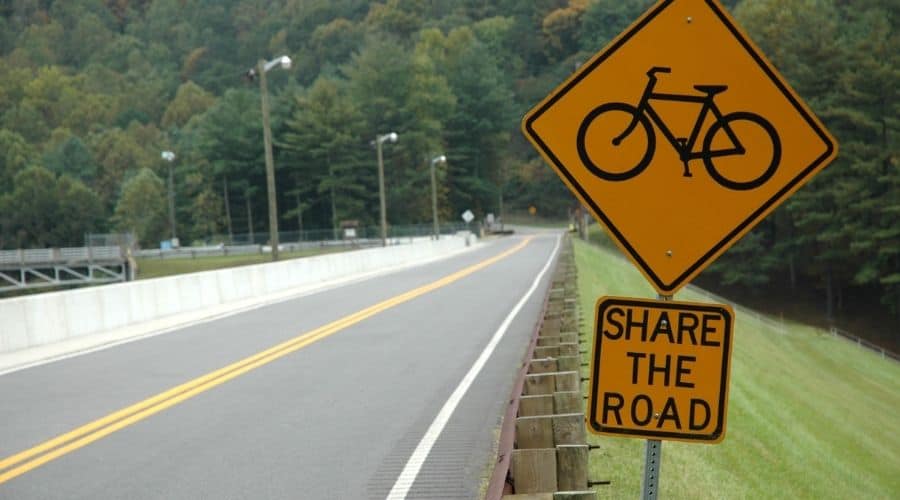Although a bicycle is not legally called a vehicle everywhere, cyclists are still bound by traffic laws when they are on the road. Moreover, there are some additional rules, which don’t apply to other vehicles, that bikes need to follow to stay safe.
Knowing the seven most essential traffic rules for cyclists will help keep you safe and alive when you ride in traffic. What regulations should a bicycle rider observe?
Regulations every bicycle rider needs to observe:
- Obey all traffic signals and signs like traffic lights, stop signs, and railroad crossings.
- Use both headlights and red rear light reflectors to stay visible to surrounding vehicles.
- Be predictable. Don’t make sudden lane changes or unexpected stops.
- Practice defensive cycling and yield to traffic and pedestrians on the road.
- Always ride near the right shoulder of the road to give you a wider berth to stay safe.
- Always wear a properly fitted bicycle helmet to reduce chance of brain injury.
- Ride single file and not beside other riders. Take proper precautions when passing riders.
Recommended Gear
To see all of my up-to-date recommendations for bikes and cycling gear, check out this resource that I made for you!
Table of Contents
7 Traffic Rules For Bicycle Riders
There are plenty of traffic laws, and you need to know all of them. Luckily, the most important rules for cyclists are pretty easy to remember.
I will explain the top seven traffic rules for bicycle riders, so you understand what they are and how each one benefits you when you’re out riding.
1 – Obey Traffic Signals & Signs
More than half of all bike riders are guilty of rolling through a stop sign, turning when the light was red, or even blowing through a traffic light because there was no traffic around to worry about.
Unfortunately, not all dangers are easy to see. Those signs and signals are there to help you and other drivers on the road work together to stay safe.
Always make a complete stop if there’s a sign or light. Take the time to familiarize yourself with other signs as well.
After all, a railroad crossing is no joke, and those tracks can trap your tires. I recommend this video from Driving TV for anyone who could use a refresher or those who haven’t learned them yet.
In it, they explain how to understand most of the traffic signs you’ll come across.
2 – Use Your Lights & Reflectors
Sadly, many drivers fail to use their lights correctly, but this is doubly important for you as a cyclist.
I recommend using both a headlight and a red rear light, even if the taillight isn’t required in your area.
It would be best if you turned your lights on anytime it’s foggy, rainy, snowing, or otherwise hard to see and be seen.
As CTS explains, “The law says you must turn your headlights on 30 minutes after sunset and leave them on until 30 minutes before sunrise. You must turn your lights on any time you can’t see at least 1000 feet ahead.”
Additionally, make sure you have all the necessary reflectors installed on your bike so cars will spot you. It’s a good idea to add reflective tape and reflective clothing as well.
Most importantly, keep your reflectors clean so they can do their job and bounce the light back to other vehicles on the road.
3 – Single File
The Single File rule is simple. Unless you are keeping up with traffic, and it’s specifically allowed in your area, don’t ride beside any other cyclist.
If you are passing, ensure that you take proper precautions and don’t linger next to the other bike, even if it’s to chat with a friend.
4 – Stay To The Right
You should always ride near the right shoulder of the road. The only exceptions to this are when you are making a left turn and in countries that drive on the left.
Staying to the side allows cars to give you a wider berth, so you stay safer. Even while riding on bike trails, you should stick to the right side to avoid collisions.
5 – Yield To Traffic & Pedestrians
Cars are going to win if you try to fight them. Although there are many times when a larger vehicle should yield to a bike, never assume they will do so in time.
Instead, practice defensive cycling and make sure you don’t give them the benefit of the doubt.
When it comes to pedestrians, they have the right of way. You should always yield to someone on foot, even if you feel they don’t belong in your path.
6 – Wear Your Helmet
Did you know that having a properly fitted helmet can lower your chances of traumatic head injury by up to 85 percent? You do now.
Some states and municipalities require helmets on all cyclists, while others only insist minors wear them.
There are some areas where helmets are not technically mandated, but that doesn’t mean you should leave yours at home.
Use your brain to save your brain, and always put your helmet on.
7 – Be Predictable
It is imperative to do only the things a car expects you to do when you are on the road. Go with the flow of traffic.
Don’t make sudden lane changes or unexpected stops. Watch out for the traffic around you and try not to swerve unless it’s absolutely necessary to avoid a road hazard like a pothole or debris that could damage your tires.
Even when you do everything right, some cars may not see you. Selene Yeager reminds us, “This phenomenon—a person’s failure to notice an unexpected object in plain sight—is known as “inattentional blindness.” It’s the reason why a driver might look right at you but cut you off anyway. Their eyes see you and your bike, but they don’t register your presence…”
Helpful Tips To Know About What Regulations A Bicycle Rider Observe
Bicycle riders need to be incredibly aware of their surroundings, but they also have to know the rules of the road.
Unfortunately, cars don’t always yield or even see you coming. By observing local laws, you can help yourself stay safer.
Here are more helpful tips to know about what regulations a bicycle rider should observe.
- It’s not specifically illegal to have a headset on while riding your bike, but it’s better if you don’t. The ability to hear what’s going on around you is crucial.
- Keep checking your local laws. New legislation gets passed all the time, which may impact your rights and requirements as a bike rider. You should periodically review your state and city’s bicycle laws and traffic laws. Otherwise, you could end up with a ticket you didn’t even know you could get. Remember that ignorance is not a defense if you end up in traffic court, and you are always responsible for knowing the law.
- If you travel out of state, visit a new country, or even cross outside your city limits, you may be subject to different traffic rules. Always check ahead.
- Know when to break the rules. For example, there are times you may have to ride against the traffic flow. Generally, it’s best to stick to the rules, but it is far more essential to stay safe.
Final Thoughts
It’s easy to assume that breaking the rules once in a while is no big deal. Bikes are as likely as cars to run a red light or perform a rolling stop, but you should be more careful.
Cyclists who stick to these seven traffic rules for bicycle riders are less likely to get injured in accidents.
Remember that you are a vehicle and a driver on your bike and always obey the traffic signals, use your lights, and stay to the right whenever it’s practical to do so.
Yield to traffic instead of assuming it will yield to you, signal your stops or turns, and be predictable, so cars never have to guess where you’ll go next.
Finally, always wear a helmet. Even if it’s not required, it could still save your life.

